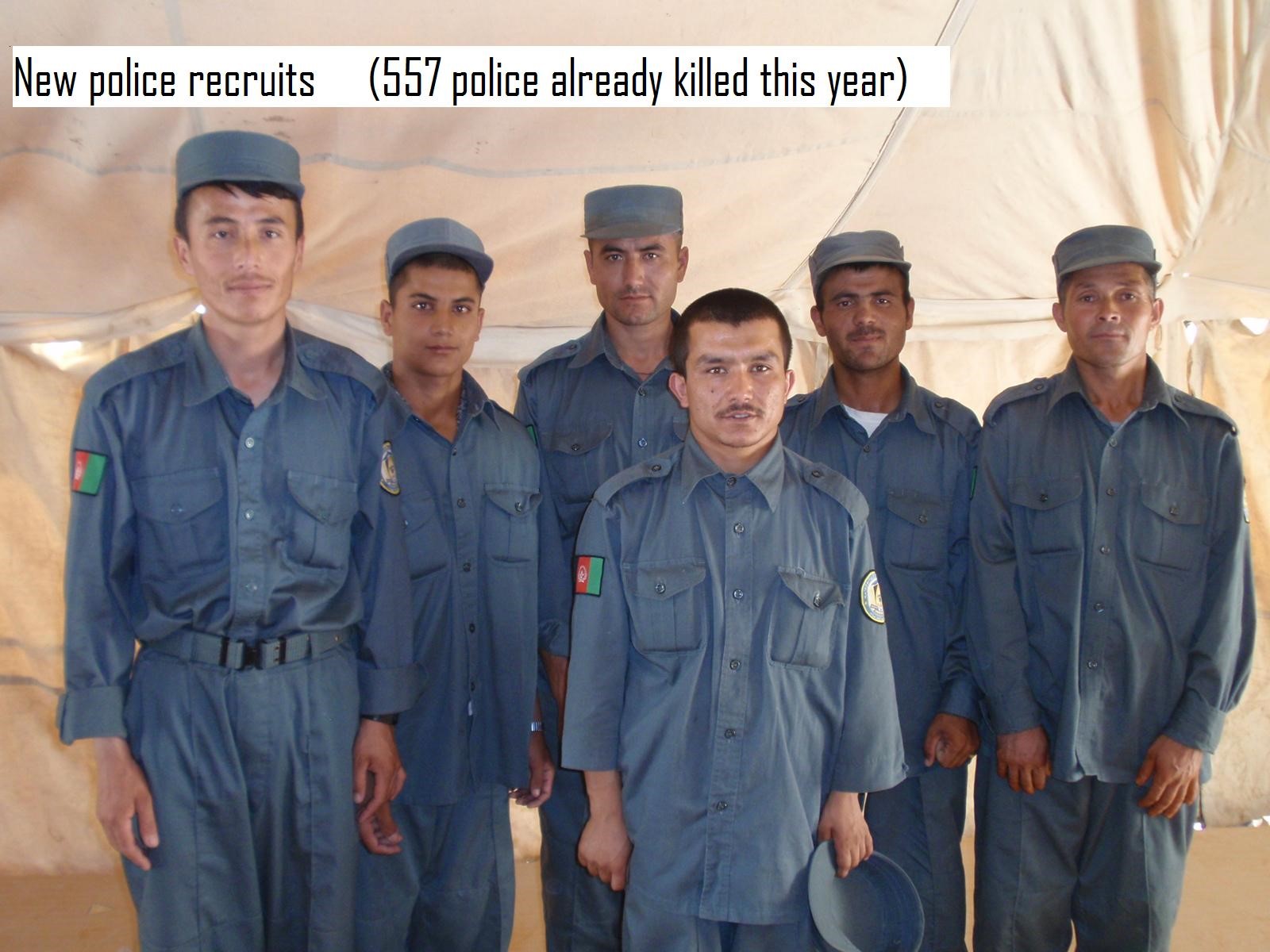
Continuing the discussion on Afghanistan drawn from fragments of text from pages 258-260 of America’s Modern Wars:
We received no substantive response to our briefing and meanwhile the war in Afghanistan continued. Finally in early 2009, we wrote an unpublished op-ed piece that said in part:
Right now, in Afghanistan we have very roughly 30,000 U.S. troops, 30,000 other international troops, 60,000 operational Afghani Army troops and maybe 60,000 active Afghani Police. The effectiveness of the Afghani army and police are open to debate, but the police have been losing almost 1,000 people a year…
This argues, regardless of everything else currently going on, that U.S. needs to to add between 30,000 and 60,000 troops Afghanistan. Anything less is too little to give us the best chance of a favorable outcome. At 60,000 more, this pushes the force ratio back to a more comfortable 3.75-to-1 ratio even if there is 32,000 insurgents and one does not count the Afghani army or police.
This is assuming that we fully understand the nature of the Afghan insurgency. If this insurgency is much more broadly based (i.e. based upon nationalism), then we are looking at even higher force levels required….
Therefore, we recommend pushing U.S. force levels up another 60,000 more for this next year while continuing to aggressively search for a political solution and while continuing to develop the Afghani National Army and the Afghani Police. If this increase and a potential political solution noticeably changes the conditions on the ground, then this has worked. If not, then in the long run we will want to back out of any major ground commitment in Afghanistan sooner rather than later.
….
In the interim, the Obama administration came up with its own response to the developing Afghan crisis, which was its own surge. Under this plan, announced in December 2009, another 30,000 or so troops were added as part of a surge, having reached the peak of the surge in the later half of 2010. They then set a withdrawal date of the middle of 2011, which they were unable to achieve.
So, more than five years after we wrote the February 2009 unpublished op-ed piece, does it still stand up? In the Report of Secretary-General of the United Nations for March 2014, they record that as of mid-January 2014 there were 145,199 Afghan National Police and 193,427 Afghan National Army soldiers. The “surge targets” were 152,000 and 195,000 respectively. So, this is between 193,427 to 338,626 counterinsurgent (depending on how you count police). This is certainly enough strength to counteract a force of 20,000 insurgents.
The U.S. force is drawing down and is disengaged from any active combat role as of 2015. The force peaked from about 100,000 in 2010 [meaning we added 70,000 U.S. troops] down to 66,000 as of start of 2013. Over the course of 2013, 34,000 of thee troops were to be withdrawn, with the U.S. involvement to end sometime in 2015. The coalition forces have already mostly left. As such, this Afghan force of over 300,000 troops and police is the primary counterinsurgent force for the future. It is certainly a much more impressive force than the 114,066 that we tried to prosecute the war with back in 2006.
On the other hand, the level of violence continued to rise during the buildup of the Afghan Army. This can be show with the reporting of the U.N. Department of Safety and Security (UNDAS) of security incidences in Afghanistan:
Security Incidences
Period Incidences Per Month
2008 8,893 741
2009 11,524 960
2010 19,403 1,617
2011 22,903 1,909
Jan-July 2012 10,109 1,431
16 Aug – 15 Nov 2012 4,639 1,546
16 Nov – 15 Feb 2013 3,783 1,261
2013 20,093 1,674
(to be continued)
